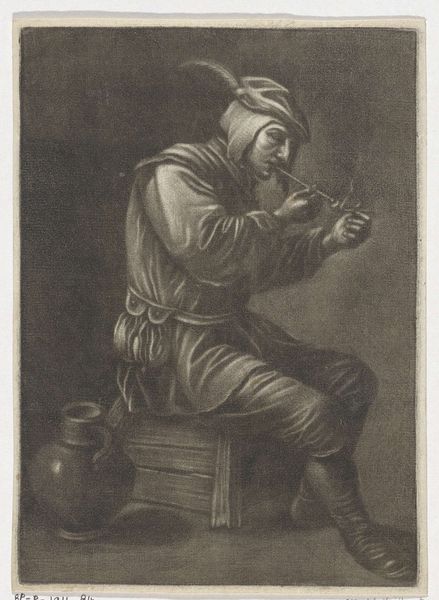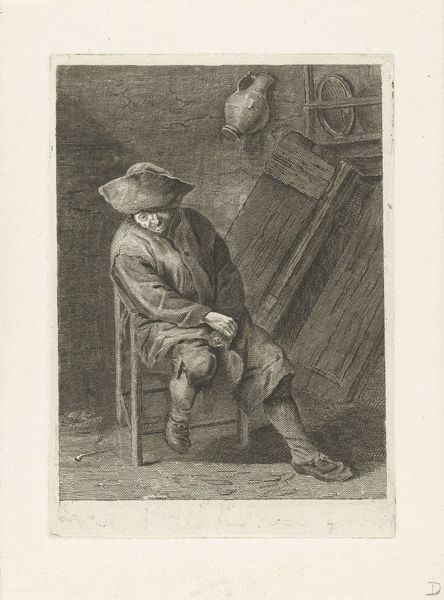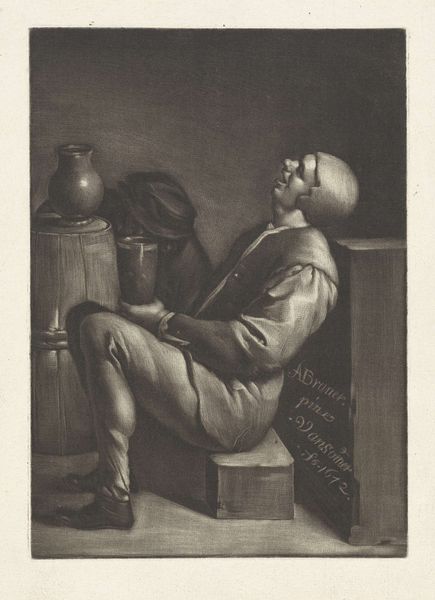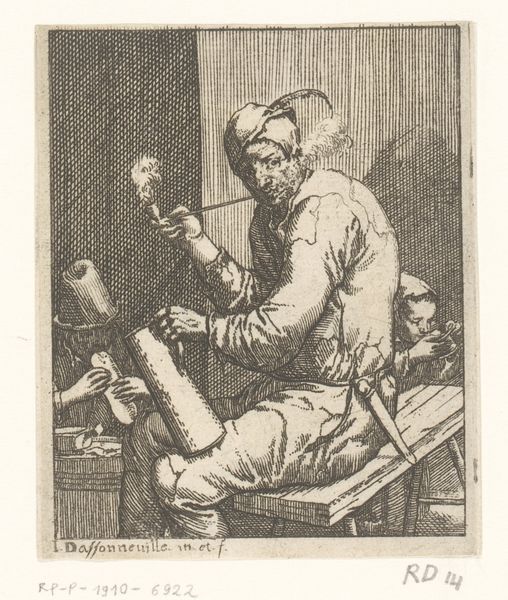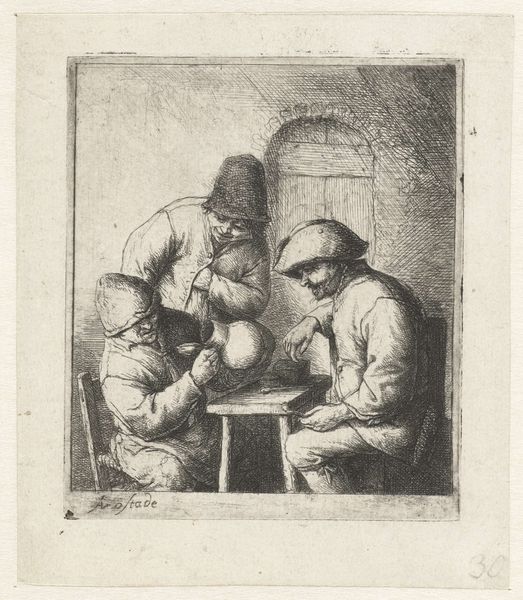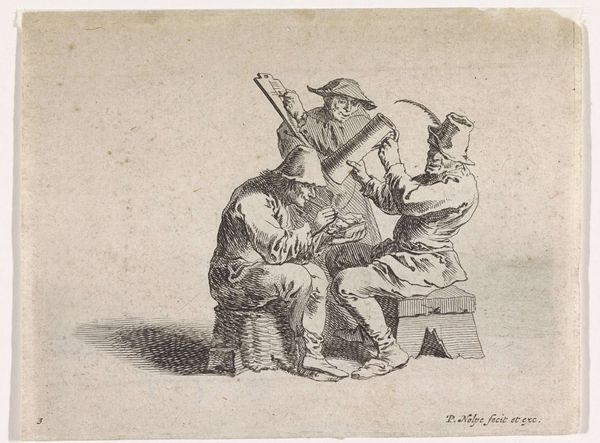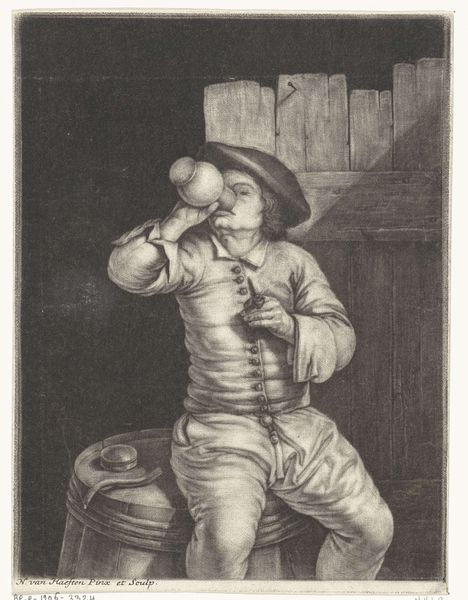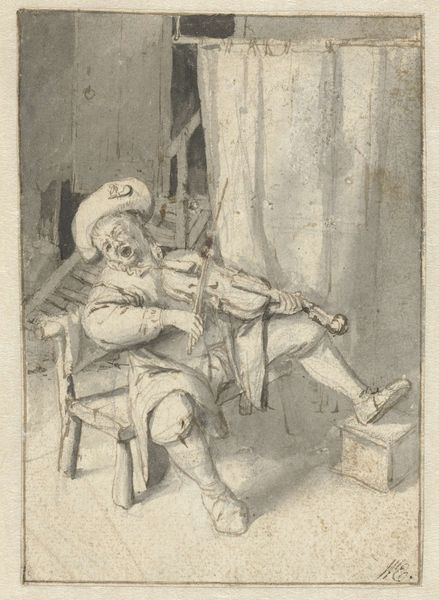
drawing, graphite
#
portrait
#
pencil drawn
#
drawing
#
dutch-golden-age
#
pencil sketch
#
charcoal drawing
#
pencil drawing
#
graphite
#
genre-painting
#
graphite
Dimensions: height 268 mm, width 233 mm
Copyright: Rijks Museum: Open Domain
Editor: Here we have Wallerant Vaillant's "Man lighting his Pipe," a graphite drawing dating from between 1658 and 1677. The scene has a casual, almost domestic feel, but there is also a lingering melancholic aura. What symbols do you see in this piece? Curator: Well, immediately, the pipe speaks to ritual, doesn’t it? The careful lighting, the smoke curling—consider the transience of smoke, its association with memory and fleeting moments. The pipe isn’t just a pipe. It signifies contemplation, perhaps even escapism. Editor: I hadn’t thought about the smoke like that. What about his clothing and the objects in the background? Curator: Indeed. The sitter's cap with a feather has playful overtones – suggestive of revelry, but even more strongly that it is artifice – it may signal something more hidden than obvious. Notice, too, the simple jug – an element of daily life that takes on greater symbolic resonance depending on what you believe the jug contains; nourishment, plain water or wine perhaps? Each represents a possible spiritual journey, an important part of what objects and possessions represented for 17th century audiences. Editor: So, objects themselves are cues or a type of short-hand for communicating more profound thoughts and beliefs? Curator: Precisely. How did people communicate across distance and time, before the modern era? Symbolically and with cultural traditions; it makes you think about our contemporary reliance on directness and whether that truly communicates our complex emotional states. Editor: This has really changed my perception of genre painting; there's a lot more happening than what first meets the eye! Curator: I hope now, when you look, you’ll see cultural memory speaking and cultural continuity developing across decades!
Comments
No comments
Be the first to comment and join the conversation on the ultimate creative platform.
